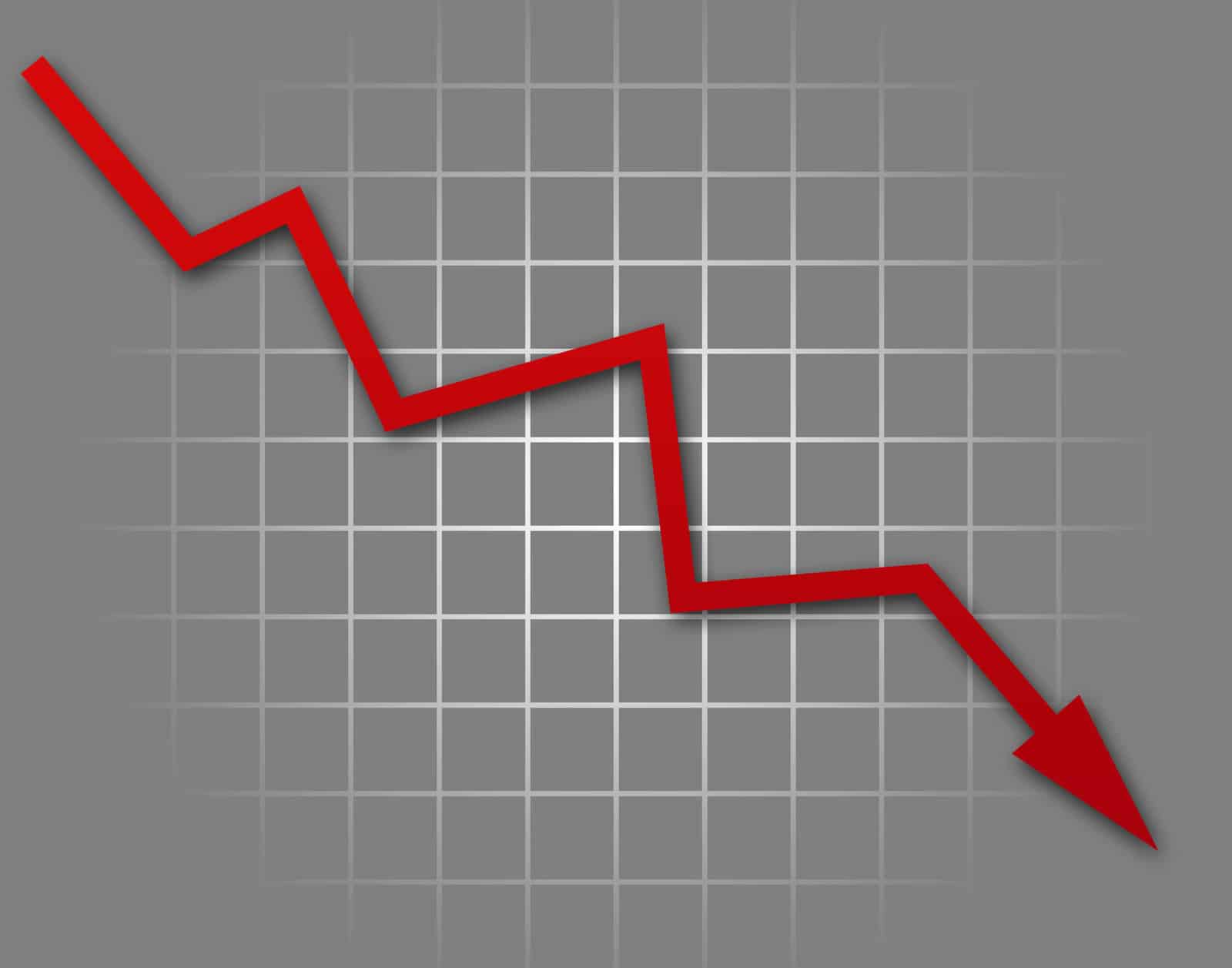

Finance
When Do Stocks Split
Published: January 18, 2024
Learn about stock splits in finance and understand when companies decide to split their stocks. Find out more about this common strategy in the stock market.
(Many of the links in this article redirect to a specific reviewed product. Your purchase of these products through affiliate links helps to generate commission for LiveWell, at no extra cost. Learn more)
Table of Contents
Introduction
Welcome to the world of stocks and investments! If you are new to the world of finance or have been in the game for a while, you might have come across the term “stock split” and wondered what it means. Stocks splitting can be an intriguing concept for investors, as it presents an opportunity for potential gains and a way to increase the number of shares in their portfolio.
So, what exactly is a stock split? In simple terms, it is a corporate action where a company divides its existing shares into multiple shares. The total value of the shares remains the same, but the number of outstanding shares increases.
Stock splits are common in the financial world and have been practiced by companies for various reasons throughout history. Understanding why companies choose to split their stocks can offer valuable insight into the dynamics of the market and the mindset of investors.
In this article, we will delve into the intricacies of stock splits, explore the reasons behind them, discuss the benefits for investors, and take a closer look at the factors that determine when a stock split occurs. We will also consider the impact of stock splits on stock prices and examine some notable examples of successful stock splits.
Whether you are a seasoned investor looking to expand your knowledge or a curious individual seeking to understand the mechanics of stock splits, this article aims to provide you with a comprehensive overview of this fascinating aspect of the financial world.
What is a stock split?
A stock split is a corporate action that involves dividing the existing shares of a company into a larger number of shares. This division does not change the total value of the shares or the overall market capitalization of the company. Instead, it simply increases the number of outstanding shares while proportionally reducing the price per share.
For example, let’s say a company has 1,000 shares of stock trading at $100 per share. If the company decides to split its stock with a 2-for-1 split, each shareholder would receive an additional share for every share they currently own. After the split, there would be a total of 2,000 shares, and the stock price would be halved to $50 per share.
Stock splits are typically expressed as a ratio, such as 2-for-1, 3-for-1, or 3-for-2. The first number represents the number of new shares an investor receives for each existing share, while the second number represents the total number of shares after the split. However, it’s important to note that not all companies split their stock using a 1-for-1 ratio, and the ratios may vary depending on the company’s specific goals or requirements.
The purpose of a stock split is mainly to increase the liquidity and accessibility of a company’s shares. By reducing the price per share, a stock split makes the shares more affordable for individual investors, opening up the opportunity for a larger pool of potential buyers.
Additionally, a stock split can lead to increased trading volume and improved market activity. This increased liquidity can attract more institutional investors and potentially lead to higher demand for the stock.
It’s important to note that a stock split does not affect an investor’s total ownership stake in a company. Although the number of shares they own may increase, the overall value of their investment remains the same. For example, if an investor owns 100 shares of a company valued at $10,000 before a stock split, after a 2-for-1 split, they would own 200 shares valued at $5,000.
Now that we have a basic understanding of what a stock split entails, let’s explore the reasons behind why companies choose to split their stock.
Reasons for stock splits
Companies decide to split their stock for various reasons, each driven by their unique circumstances and goals. Here are some common motivations behind stock splits:
- Increased liquidity: One of the primary reasons companies choose to split their stock is to improve liquidity. By reducing the price per share, stock splits make the shares more affordable for individual investors, attracting a larger pool of potential buyers. This increased liquidity can help enhance the trading volume and market activity surrounding the stock.
- Broader investor base: Stock splits often aim to expand the investor base by making the shares more accessible to a wider range of investors. Lowering the price per share can attract individual investors who may have been deterred by the higher price. This can lead to a more diverse shareholder base, which can benefit the company in terms of increased market participation and shareholder support.
- Psychological impact: Stock splits can have a positive psychological effect on investors. A lower stock price after a split can create the perception of affordability, which can generate excitement and attract investor attention. This perception may also lead to increased demand and trading activity, potentially driving the stock price higher in the long run.
- Signal of confidence: In some cases, a stock split can be seen as a signal of confidence from the company’s management. When a company splits its stock, it is essentially stating that it believes the shares are undervalued and that it expects future growth. This display of confidence can instill trust and attract investors who view the stock split as a positive indicator of the company’s prospects.
- Marketability: Stock splits can enhance the marketability of a company’s shares. Lowering the price per share can attract more interest from brokerage firms, who may be more inclined to recommend the stock to their clients due to its increased affordability. This can further contribute to increased trading volume and liquidity.
It is important to note that companies may have multiple reasons for splitting their stock, and the specific motivations can vary depending on the company’s goals and the prevailing market conditions.
Now that we have explored the reasons behind stock splits, let’s move on to discuss the benefits of stock splits for investors.
Benefits of stock splits for investors
Stock splits can offer several benefits for individual investors. Let’s examine some of the advantages:
- Increased affordability: One of the primary benefits of a stock split is that it makes shares more affordable for individual investors. By reducing the price per share, smaller investors with limited capital can purchase shares of the company. This increased affordability allows broader participation in the market and gives a wider range of investors the opportunity to own a piece of the company.
- Liquidity and marketability: Stock splits usually lead to increased liquidity and marketability. Lowering the price per share attracts more buyers and sellers, resulting in higher trading volume and improved market activity. This liquidity benefits investors by ensuring that there is a healthy supply and demand for the stock, making it easier to buy or sell shares at fair prices.
- Potential capital appreciation: While a stock split does not inherently change the underlying value of a company, it can create positive sentiment among investors. The perception that the stock is more affordable can generate excitement and attract new investors, potentially driving up the demand for shares and leading to capital appreciation over time.
- Diversification opportunities: Stock splits provide investors with an opportunity to diversify their portfolios. With a lower price per share, investors can allocate their capital across a wider range of stocks and sectors, spreading the risk and potentially increasing their chances of earning higher returns.
- Psychological impact: Stock splits can have a psychological impact on investors. A lower price per share may make the stock appear more attractive and create a sense of confidence and optimism. This positive sentiment can result in increased trading activity and buying interest, potentially leading to upward momentum in the stock price.
It’s important to note that while stock splits can offer these benefits, they are not guaranteed. The future performance of a stock depends on various factors, including market conditions, the company’s financial performance, and overall investor sentiment.
Now that we understand the benefits of stock splits for investors, let’s explore the factors that determine when a stock split occurs.
Factors that determine when a stock splits
Stock splits are not arbitrary decisions made by companies. They are typically influenced by a combination of factors that take into consideration the company’s financial performance, market dynamics, and investor sentiment. Here are some key factors that determine when a stock split occurs:
- Price appreciation: One of the primary factors that may trigger a stock split is significant price appreciation. When a stock’s price reaches a level that is considered high, a company may choose to split its shares to bring the price down to a more accessible range. This allows the stock to remain attractive to a wider range of investors and potentially generate further demand.
- Liquidity and trading volume: Companies may consider stock splits to improve liquidity and trading volume. If a company’s shares are illiquid or do not attract sufficient trading activity, splitting the stock can increase the number of shares outstanding and potentially enhance market participation. This can make it easier for investors to buy and sell shares at fair prices.
- Market perception: The perception of a company’s stock in the market can also influence the decision to split. If a company’s stock price is very high compared to its peers or industry standards, it may be seen as less affordable or less accessible to investors. Splitting the stock can alter this perception and bring the stock price in line with industry norms, potentially attracting more investor interest.
- Corporate actions: Stock splits may be initiated as part of broader corporate actions. For example, a company undergoing a merger or acquisition may choose to split its shares to facilitate the transaction or align the stock price with the acquiring company’s share price. Additionally, companies may use stock splits strategically as part of their capital restructuring plans.
- Company growth and expansion plans: Stock splits can be a reflection of a company’s growth and expansion plans. When a company anticipates future growth and wants to make its shares more affordable for potential investors, a stock split can be seen as a positive action that signals the company’s confidence in its prospects. This can attract new investors and potentially increase the demand for shares.
It’s important to note that although these factors can influence a company’s decision to split its stock, the specific reasons may vary from one company to another. Ultimately, the decision to split stock is at the discretion of the company’s management and board of directors, in consultation with their financial advisors and considering the best interests of the company and its shareholders.
Now that we have explored the factors that determine when a stock split occurs, let’s move on to the next section to understand the impact of stock splits on stock prices.
The impact of stock splits on stock prices
Stock splits can have both short-term and long-term effects on stock prices. Understanding the impact of stock splits is essential for investors to make informed decisions. Here are some key points to consider:
Adjustment in stock price: When a stock split occurs, the stock price is adjusted accordingly to reflect the increased number of shares. For example, in a 2-for-1 stock split, the stock price would be halved in response to the doubling of the shares. While the price per share decreases proportionally, the overall value of the investor’s holdings remains the same.
Market psychology: Stock splits can have a psychological impact on market participants. A lower stock price after a split may create the perception of affordability and generate excitement among investors. This positive sentiment can lead to increased buying interest and potentially drive up demand, which can result in upward momentum in the stock price in the long run.
Increased liquidity: Stock splits aim to enhance liquidity and market activity. By reducing the price per share, stock splits attract a larger pool of potential buyers, which can increase trading volume and improve market liquidity. This increased liquidity can contribute to a more efficient market and potentially lead to price stability.
Market perception: Stock splits can influence how the market perceives a company’s stock. A lower stock price after a split may make the stock appear more attractive and affordable to investors. This perception can generate positive sentiment and potentially attract more buying interest, which can positively impact the stock price in the long term.
No fundamental impact: It is important to note that while stock splits can have psychological and market effects, they do not have any direct fundamental impact on the company’s financial performance or future prospects. The underlying value of a company remains the same after a stock split, as the total market capitalization and earnings are unaffected.
It’s crucial for investors to approach stock splits with a comprehensive understanding of the market dynamics and the company’s fundamentals. While stock splits can create short-term price fluctuations and market reactions, ultimately, the long-term performance of a stock depends on factors such as the company’s financial health, industry trends, and overall market conditions.
Now that we have explored the impact of stock splits on stock prices, let’s delve into some notable case studies of successful stock splits.
Case studies of notable stock splits
Throughout history, there have been numerous notable stock splits that have had a significant impact on the companies involved and the market as a whole. Let’s take a look at a few of these case studies:
- Apple Inc. (AAPL): In June 2014, Apple executed a 7-for-1 stock split, where every shareholder received six additional shares for each share they owned. Prior to the split, Apple’s stock price had reached over $700 per share. The split brought the price down to a more affordable range, making it accessible to a broader base of investors. Following the split, the stock price continued to rise, and Apple became the first company to surpass a $1 trillion market capitalization in 2018.
- Amazon.com Inc. (AMZN): In April 1999, Amazon implemented a 2-for-1 stock split when its stock price was trading close to $100 per share. The split aimed to increase liquidity and attract a wider range of investors. Following the split, Amazon’s stock price continued to climb, and the company expanded its business to become one of the world’s largest e-commerce and cloud computing companies.
- Tesla Inc. (TSLA): In August 2020, Tesla announced a 5-for-1 stock split. The split took effect in September, with the company’s stock price at an all-time high. The split aimed to make Tesla’s shares more accessible to retail investors, particularly those interested in purchasing fractional shares. The split generated significant investor interest and drove renewed buying activity, leading to further price appreciation for the stock.
- Google (now Alphabet Inc. – GOOGL): In April 2014, Google executed a 2-for-1 stock split. The split was aimed at creating a new class of non-voting shares, while the existing shares were converted into voting shares. This structure allowed the company’s founders, Larry Page and Sergey Brin, to retain control over the company while making the shares more accessible to a broader investor base.
- Microsoft Corporation (MSFT): In February 2003, Microsoft implemented a 2-for-1 stock split when its stock price was trading around $50 per share. The split aimed to increase liquidity and make the shares more affordable to individual investors. Following the split, Microsoft’s stock price experienced steady growth, and the company expanded its business to become one of the world’s leading technology companies.
These case studies highlight the impact of stock splits on the market perception, liquidity, and shareholder value of the companies involved. While stock splits alone do not guarantee success, they can contribute to increased investor interest and improved market dynamics.
Now that we have examined notable case studies, let’s conclude our exploration of stock splits.
Conclusion
Stock splits are significant events that can have various implications for companies and investors. While they do not change the underlying value of a company, stock splits can influence market perception, increase liquidity, and make shares more accessible to a broader range of investors.
Companies choose to split their stock for different reasons, including increased liquidity, attracting a wider investor base, and improving marketability. These splits can create positive psychological effects, generate excitement among investors, and potentially lead to capital appreciation in the long run.
Investors can benefit from stock splits by gaining access to more affordable shares, enhanced liquidity, diversification opportunities, and the psychological influence of perceived affordability. However, it is essential to remember that stock splits alone do not guarantee success, and future performance depends on various factors such as market conditions, company fundamentals, and overall investor sentiment.
Throughout history, there have been notable stock splits from companies like Apple, Amazon, Tesla, Google, and Microsoft, which have had a significant impact on the market and shaped the companies’ growth trajectories.
In conclusion, understanding the mechanics and implications of stock splits is crucial for any investor. It allows for informed decision-making and provides insights into market dynamics. By recognizing the reasons for stock splits and their impact on stock prices, investors can better navigate the ever-changing landscape of the stock market and strive towards achieving their financial goals.













